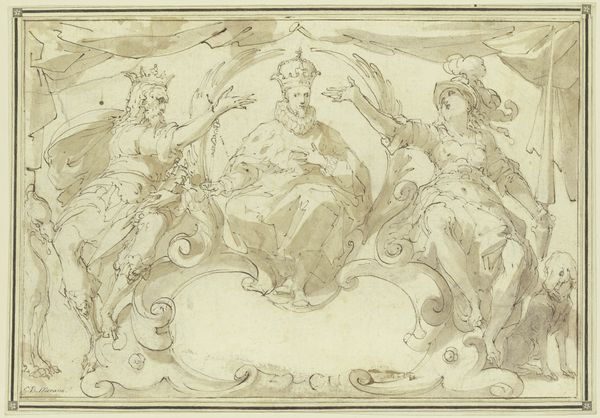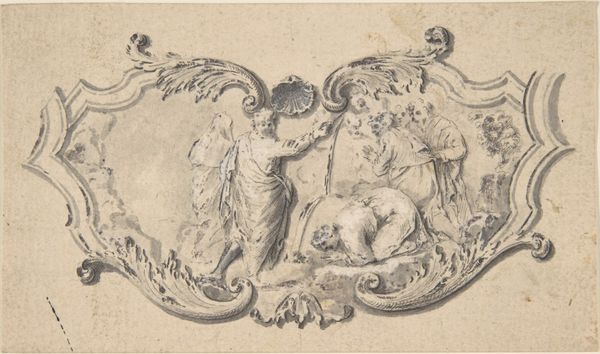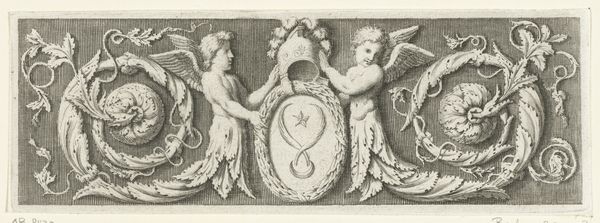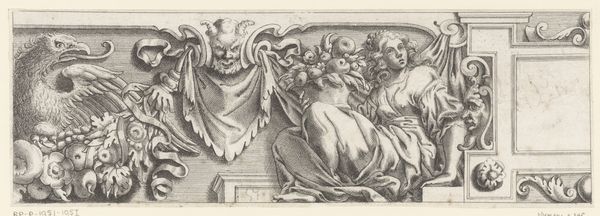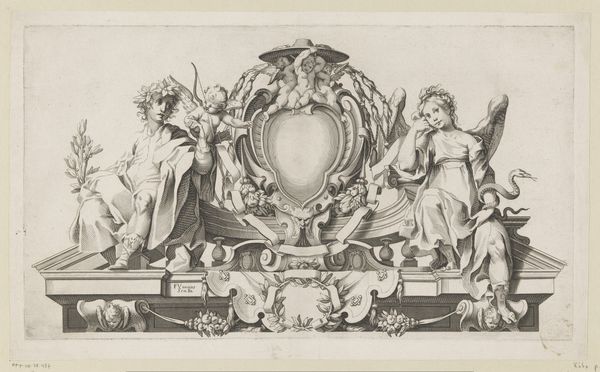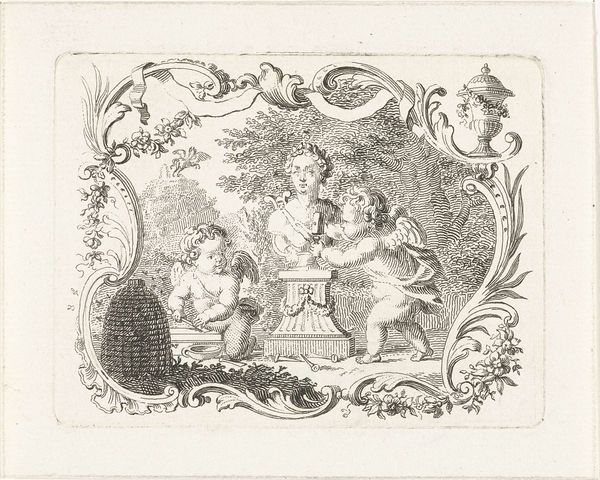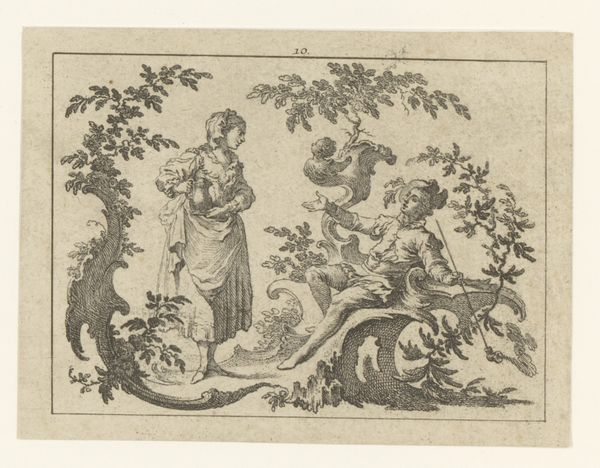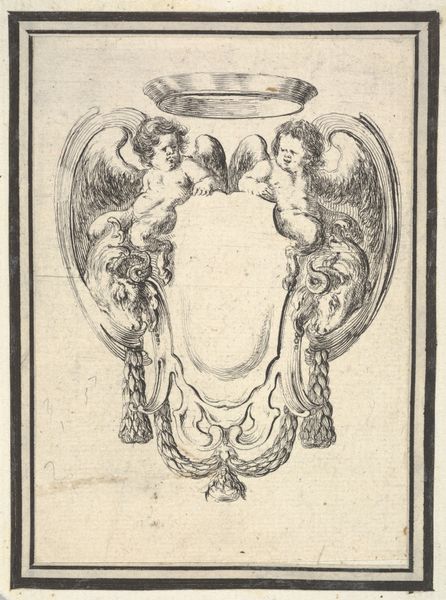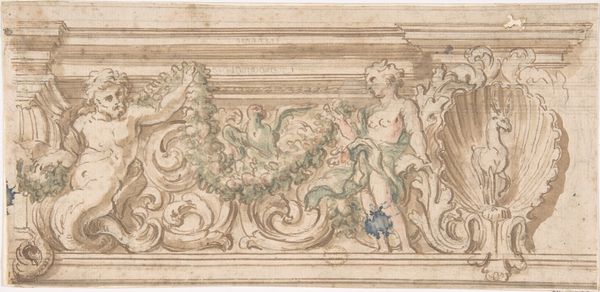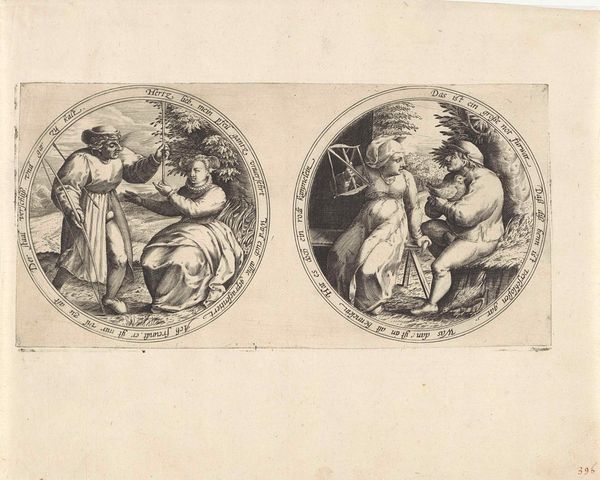
Horizontal Panel with Two Medallions Containing Cupid 1596 - 1652
0:00
0:00
drawing, print, engraving
#
portrait
#
drawing
#
pen drawing
# print
#
mannerism
#
cupid
#
men
#
engraving
Dimensions: Sheet: 2 × 3 5/16 in. (5.1 × 8.4 cm)
Copyright: Public Domain
Editor: This is *Horizontal Panel with Two Medallions Containing Cupid*, an engraving by Floris Balthasarsz van Berckenrode from between 1596 and 1652. I find the composition, with its circular frames and symmetrical arrangement, surprisingly intimate despite the somewhat mythological subject matter. What captures your imagination most about this print? Curator: Ah, a delicate dance of ink and imagination! I am particularly drawn to the contrast between the classical imagery, like the Cupids, and the almost domestic feel evoked by the portraits. Notice how the artist uses line weight to create depth, even in such a small scale. Do you feel that it exudes playfulness? Almost mischievous in its understated grandeur? It reminds me of a whispered secret. Editor: I see what you mean about the playfulness. I hadn't quite noticed the level of detail in the lines themselves. It's incredibly intricate for something so small! The mischievousness, perhaps, is from cupid? I didn't focus on how each 'portrait' has a cupid and they are mirror images almost in each circle! Why combine cupids with the women? Curator: It’s about LOVE, isn’t it? And what *is* love? Is it only familial, between a mother and child, as we see on the left, a portrait within a portrait, a visual echo? Or is it the love of bounty, as depicted on the right with the figure and what appears to be harvested wheat or other natural offerings? Perhaps it's about LOVE found and LOVE in nature? These are rhetorical, you understand, but the artist would hope for us to wonder, wouldn't they? To pause and, quite literally, consider the lines before us! Editor: That’s a fascinating perspective – considering the dual aspects of love. I initially saw it as just another classical image, but you’ve completely shifted my view. It's more nuanced and reflective than I initially thought. Curator: Art, at its best, is a mirror reflecting our own ever-changing perspectives, isn't it? I am certain the artist, were they able, would find immense joy in the contemplation it inspires, across time and space.
Comments
No comments
Be the first to comment and join the conversation on the ultimate creative platform.
